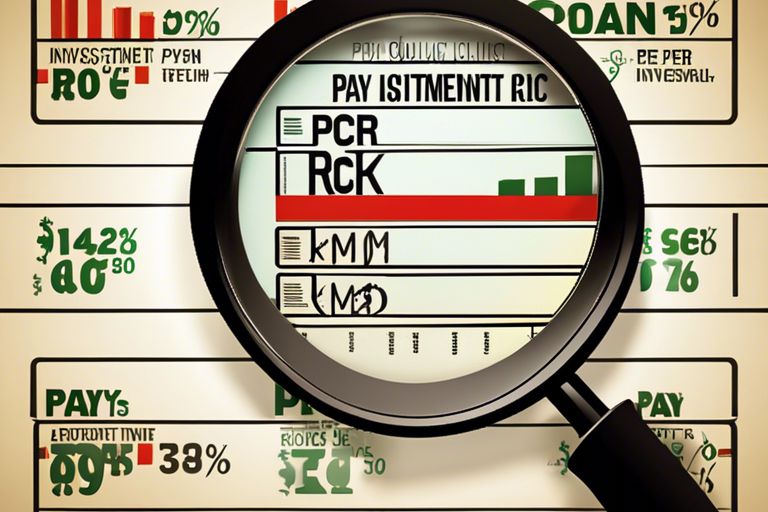Overwhelmed by the thought of optimizing your PPC ads? A/B testing is a powerful tool that can help you fine-tune your campaigns for maximum results. In this blog post, we will walk you through the process of setting up and running A/B tests on your pay-per-click ads to improve performance and achieve your advertising goals.
Key Takeaways:
- Testing Variables: When conducting A/B testing for PPC ads, focus on variables such as headlines, CTAs, images, and ad copy to determine which combinations result in better performance.
- Statistical Significance: Ensure that you have a large enough sample size to achieve statistical significance in your A/B tests. This will help you make data-driven decisions based on reliable results.
- Continuous Optimization: A/B testing should be an ongoing process to continuously improve the performance of your PPC ads. Regularly monitor results and implement changes based on the insights gained from testing.

Understanding the Basics of A/B Testing
What is A/B Testing and Why is it Important for PPC Ads?
There’s no one-size-fits-all when it comes to creating the perfect PPC ad. A/B testing, also known as split testing, is a method used by digital marketers to compare two versions of a webpage or app against each other to determine which one performs better. In the matter of PPC ads, A/B testing is crucial in optimizing ad performance, increasing click-through rates, and ultimately driving conversions.
Key Concepts: Variations, Samples, and Statistical Significance
While conducting A/B tests, it’s important to understand key concepts like variations, samples, and statistical significance. Variations are the different versions of your ad that you’ll be testing, samples refer to the number of times each variation is shown to your audience, and statistical significance helps you determine if the results are reliable and not due to random chance.
Significance. Statistical significance is determined by analyzing the data collected during the A/B test. It tells you whether the differences in performance between the variations are due to the changes made or if they could have occurred randomly. Ensuring statistical significance helps you make informed decisions based on solid evidence rather than assumptions.
Preparing for A/B Testing
Clearly, to get started with A/B testing for your PPC ads, you need to have a solid plan in place. For a comprehensive guide on A/B testing for PPC, check out A Practical Guide to A/B Testing for PPC (+5 Ideas to Test).
Identifying Goals and Objectives for Your PPC Ads
On the outset of your A/B testing journey, it is crucial to clearly define the goals and objectives you want to achieve with your PPC ads. Whether it’s increasing click-through rates, improving conversion rates, or lowering cost per acquisition, having specific goals will help guide your testing process effectively.
Choosing the Right A/B Testing Tool for Your Needs
Identifying the right A/B testing tool is imperative for carrying out successful experiments. Different tools offer various features such as ad variation testing, statistical significance calculation, and automated optimization. It’s important to select a tool that aligns with your testing requirements and budget.
For instance, if you have a small budget, you may opt for simpler tools like Google Optimize or Optimizely. On the other hand, if you need more advanced features and have a larger budget, tools like VWO or Unbounce might be more suitable for your needs.
How to Design Effective A/B Tests
Unlike Using A/B testing to maximise results for your Amazon ads, designing effective A/B tests for your PPC ads involves careful planning and execution. Here are some key strategies to help you get the most out of your A/B testing efforts.
Tips for Selecting Winning Ad Elements to Test
- Start by analyzing your current ad performance metrics to identify areas for improvement.
- Choose one element to test at a time to accurately measure its impact on ad performance.
- Rotate through different elements such as headlines, ad copy, visuals, and calls-to-action.
Assume that each element you test can have a significant impact on your ad’s effectiveness, so choose wisely.
Factors to Consider When Creating Variations
- Consider your target audience and the message you want to convey with each variation.
- Ensure that each variation is significantly different from the original to yield meaningful results.
The process of creating variations involves careful consideration of how each element contributes to the overall effectiveness of the ad.
- Though it may be tempting to make subtle changes, significant variations are more likely to provide valuable insights.
Best Practices for Writing Compelling Ad Copy
One of the most critical aspects of A/B testing is writing compelling ad copy that resonates with your target audience. To create engaging ad copy, focus on highlighting unique selling points, using clear and concise language, and incorporating strong CTAs.
To optimize your ad copy, consider experimenting with different messaging styles, tones, and word choices to see which resonates best with your audience.
Interpreting and Acting on A/B Testing Results
How to Analyze and Draw Conclusions from Your Test Data
Little tweaks can make a big difference in the performance of your PPC ads. Once you have run your A/B tests and collected data on the different variations, it’s time to dig into the numbers. Look for patterns and trends in the data to understand which elements are driving results. Analyze metrics like click-through rates, conversion rates, and cost per conversion to determine which ad performed better and why.
FAQ
Q: What is A/B testing for PPC ads?
A: A/B testing for PPC ads is a method where two versions of an ad (A and B) are compared against each other to determine which one performs better in terms of achieving the desired goal, such as clicks or conversions.
Q: How do you set up an A/B test for PPC ads?
A: To set up an A/B test for PPC ads, you first need to select a variable to test (such as headline, call-to-action, or image), create two versions of the ad with only one differing element, allocate equal traffic to each version, and track the performance metrics.
Q: What are some best practices for A/B testing PPC ads?
A: Some best practices for A/B testing PPC ads include testing one variable at a time, running tests for an appropriate duration to gather statistically significant data, using A/B testing tools for automated testing, and implementing the learnings from each test to continuously improve ad performance.





